Skype: neodalle-travel
Tel: +86 135 7447 2266
E-mail: sales@zhangjiajieholiday.com
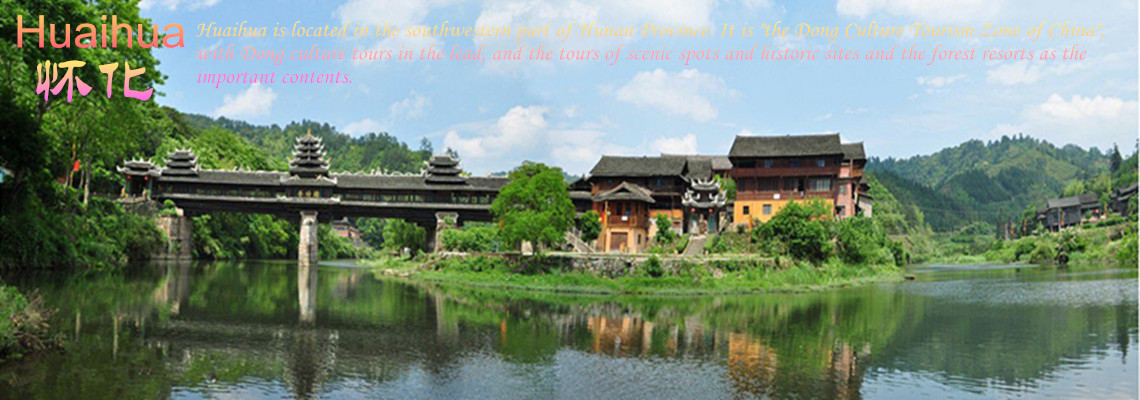
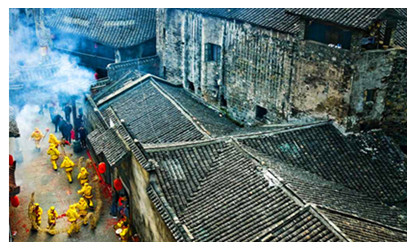
In the town, a grand and graceful fresco was found not long before. It is in the form of Character "Fu" (means "Fortune" in Chinese) which is composed by such animal paintings as magpies, red-crowned cranes, sika deer, and tortoises. The unparalleled fresco embodies a rosy prospect of "Hongfuqitian" (an idiom means being supremely fortunate, with a homophone of "Hong" as Hongjiang in the first word) with five implications of fortune, promotion, longevity, happiness, and wealth in the form of animal paintings. The fresco's creation is exclusive to Hongjiang Ancient Commercial Town, and is unique in the whole country.
What to see?
Fuquan Hall
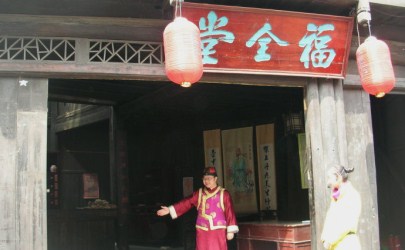 Fuquan Hall, known as "福全堂, Fuquan Tang" in Chinese, is located inYijia Alley, Hongjiang Ancient Town. Fuquan Hall was first built in 1894, the twentieth year of Guangxu Period in Qing Dynasty. It is a traditional Chinese medicine shop dealing in herb wholesale and herb processing.In late Qing Dynasty, the government seemingly lifted the ban on opium and integrated banning with heavy taxes. Opium was named “Tuyao (local medicine)” and was taxed in the taxonomy of medicine. Hongjiang enjoys convenient water transportation and gradually became a major concentration and distribution market center of opium in inner land of China.
Fuquan Hall, known as "福全堂, Fuquan Tang" in Chinese, is located inYijia Alley, Hongjiang Ancient Town. Fuquan Hall was first built in 1894, the twentieth year of Guangxu Period in Qing Dynasty. It is a traditional Chinese medicine shop dealing in herb wholesale and herb processing.In late Qing Dynasty, the government seemingly lifted the ban on opium and integrated banning with heavy taxes. Opium was named “Tuyao (local medicine)” and was taxed in the taxonomy of medicine. Hongjiang enjoys convenient water transportation and gradually became a major concentration and distribution market center of opium in inner land of China.
Since the trade of opium earned high margins of profits, gradually, it became the major part of Fuquan Hall’s herb wholesale business. During the heyday of Fuquan Tang Hall, the accumulated capitals from herb trade totaled 100,000 silver dollars; the income of Tuyao trade totaled 200,000 silver dollars. And the business leapt into the wealthy trade in Hongjiang.
Fuquan Hall has two entrances and two storeys. The building belongs to the front-shop-back-yard architecture style. The front yard is for business and transactions. There are counters, herb cabinets and worshipped sculpture of “King of Herbal Medicine” Sun Simiao. The backyard is for the processing of herbs into finished medicine. The second floor is mainly for storage of cargos. The house is a typical commercial-dwelling-in-one Yinziwu House.
Lijin Tax Bureau
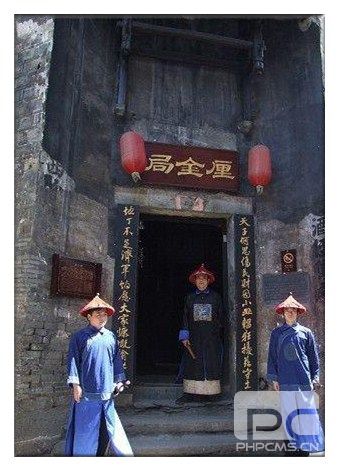 Lijin Tax Bureau, called "厘金局" in Chinese,is a Key National Museum of Cultural Relics. It lies at a small lane called Longchuanchong in Hongjiang Ancient Town and was built in 1855,the fifth year of the reign of Emperor Xianfeng of Qing Dynasty . At that time, it was called “Hunan Lijin Bureau Hongjiang Branch”.
Lijin Tax Bureau, called "厘金局" in Chinese,is a Key National Museum of Cultural Relics. It lies at a small lane called Longchuanchong in Hongjiang Ancient Town and was built in 1855,the fifth year of the reign of Emperor Xianfeng of Qing Dynasty . At that time, it was called “Hunan Lijin Bureau Hongjiang Branch”.
Lijin, also termed “Lijuan”, is a type of tax on the cargo transported through the major domestic rivers and highways. It was collected by the late Qing Dynasty to suppress the uprisings and to also furnish government provisions. The taxation rate was first set at 1% of the actual value of the cargo taxed. 1% equals “li” (a Chinese currency measurement), so the tax is called “Lijin” (jin means money in Chinese). In the early Republic Period, the Qing System was inherited. The bureau was changed to “Hongjiang Lijin Taxation Bureau .” In 1929, Lijin was abolished in Hunan, and the Lijin Mechanism no longer existed.
The bureau house was purchased by Zhang Nanshan, a businessman from Shanxi Province, for his dwelling and business affairs. The Lijin Bureau is a one-entrance-three-door single-eave-double-story house with brick walls surrounding it. The height of the roof is uneven. There are two stories in the south and three stories in the north, which are arrayed in an appealing way. There is a splaying door in the southwest direction which leads directly to the south courtyard. On the right side is the taxation counter. Inside the bureau, there were many departments such as the official document office, accounting office, general affairs office, secretary office, customs office, seal office, voucher office and inspection team leader office. The whole architecture fits the local physiognomy well. It has a reasonable, simple, yet appealing layout. It is a key study for historical data research on the social economic development, the taxation history of the late Qing Dynasty as well as the architecture art of the south mountainous regions. Presently it has been turned into the Hongjiang Taxation Exhibition Hall.
Garrison Head’s Office
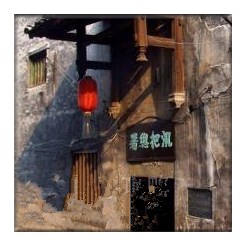 Garrison Head’s Office, also called "汛把总署" in Chinese,is a National Key Protection Unit of Cultural Relic. Lying at Yuying Alley in Hongjiang Ancient Town, it was first built in 1728, the sixth year of Yongzheng Period in Qing Dynasty.
Garrison Head’s Office, also called "汛把总署" in Chinese,is a National Key Protection Unit of Cultural Relic. Lying at Yuying Alley in Hongjiang Ancient Town, it was first built in 1728, the sixth year of Yongzheng Period in Qing Dynasty.
Garrison Head’s Office was a grass root force of the Green Standard Troop in Qing Dynasty. The office has its gate in the north and rear in the south. The layout is standardized and tidy, with high walls around and bluestones on the ground. The hall is spacious; the house roofs are arrayed in seesaws; a grand and solemn atmosphere is created. The carving decorations are meticulous and elaborate like that in silk and paintings. The courtyard lies in the center, with a good lighting and ventilation.
With the implication that here in the small yard, one can see the raining water of the four seasons.Around the courtyard are inscribed meaningful and thought-provoking Chinese aphorisms such as “No cheating to the God”, “No gossiping of others’ shortcomings”, “Treating others with forgiveness”, “No excessive pursuit of oddity”, “Neither feels restrained nor inferior”, and “Living on humanity and righteousness.” Now the whole architecture is laid out according to its original scene. Inside is an exhibition room of the Green Standard Troop. Imitation performances on the daily routine life of the Bazong in Qing Dynasty are staged. They are the vivid models introducing to the visitors the military system and officer life of Qing Dynasty.
Ancient Escort Office
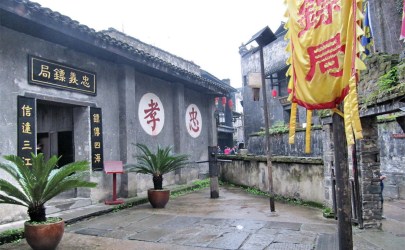 The Ancient Escort Office is located in Hongjiang Ancient Town.Connecting Yunnan, Guizhou, Guangxi, Huanan and Sichuan, the ancient city of Hongjiang used to be a commercial and cultural center in Southwest China.Excepting by boat on Yuan River and Wu River,the merchants usually transferred their goods by walking on the two roads. One was the way to Baoqing 9 Shaoyang),Changsha and Wuhan via Dongkou County,another was the way to Burma,India via Guiyang and Kunming.
The Ancient Escort Office is located in Hongjiang Ancient Town.Connecting Yunnan, Guizhou, Guangxi, Huanan and Sichuan, the ancient city of Hongjiang used to be a commercial and cultural center in Southwest China.Excepting by boat on Yuan River and Wu River,the merchants usually transferred their goods by walking on the two roads. One was the way to Baoqing 9 Shaoyang),Changsha and Wuhan via Dongkou County,another was the way to Burma,India via Guiyang and Kunming.
They often employeed hundreds of porters to walk together so as to keep their goods safety.Eventhough, it was not safe because of large of thieves in that time. So the merchants had to ask escorters to keep them safety.
The Ancient Escort Office was named "Zhong Yi Escort Office' which was founded in the Emperor Qianlong Period of Qing Dynasty.And the first master was Mr Liu Dapeng who was a famous master of Chinese Kongfu in Hunan druing that time.In 1930s,the Escort was stopped working after a group of army were sent by Hunan Province Government to stay in Hongjiang Town.In 2006,the Ancient Escort Office was reopended to tourists as one of the top attractions in Hongjiang Ancient Town
Old Brothel Of Hefengyuan
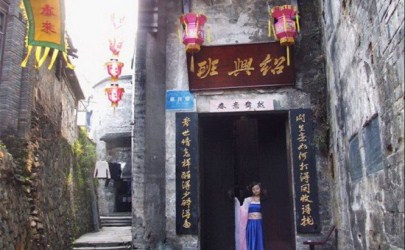 Hefeng Courtyard, well known as Shaoxingban,is an old brothel which is located in Kanglemen Street,Yujiachong Area, Hongjiang Ancient Town of Huaihua City.Built in 1860,Qing Dynasty, the brothel was the special place for the rich and officials to visit prostitues.
Hefeng Courtyard, well known as Shaoxingban,is an old brothel which is located in Kanglemen Street,Yujiachong Area, Hongjiang Ancient Town of Huaihua City.Built in 1860,Qing Dynasty, the brothel was the special place for the rich and officials to visit prostitues.
The complex buildings is a courtyya surrounded by wall.Entering the brothel with three stories, you have to pass the three gates.Every room has a secrat exit to go out.Shaoxingban Brothel is so private that it features the constructure's character of brothel industry.
In 2006, Shaoxingban Brothel was rebuilt and opened to tourists as a scenic spot in Hongjiang Ancient town. Here you can see the old theater where was once the place for the visitor to enjoy prostitues singing,dancing and playing Chinese music instruments.
 Ask Questions ?
Ask Questions ?